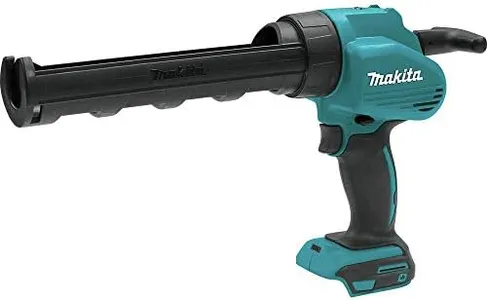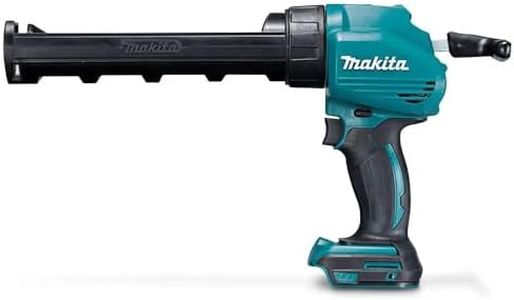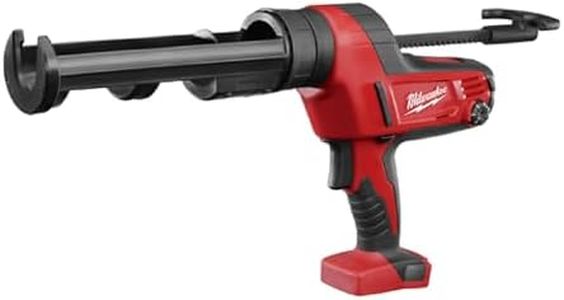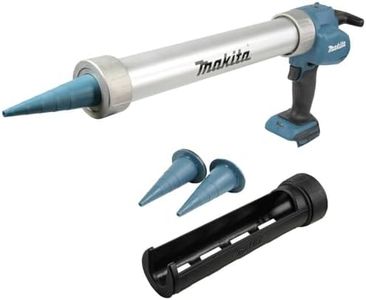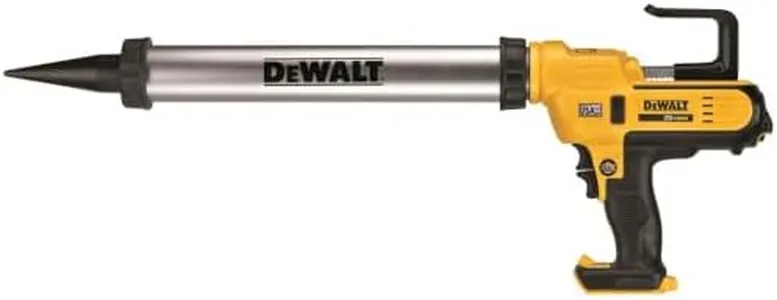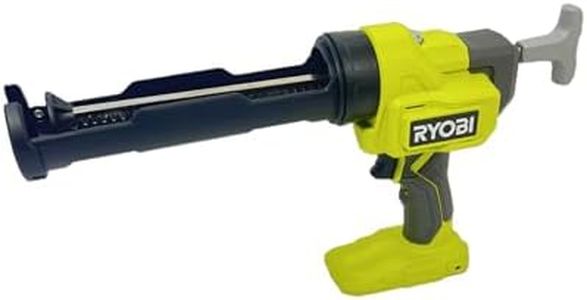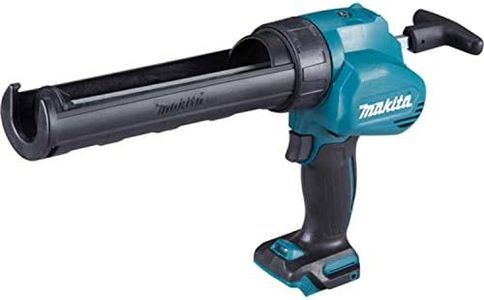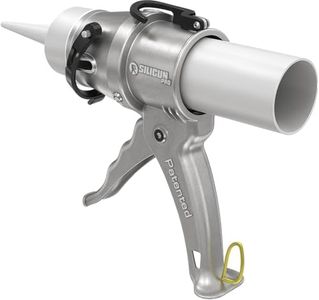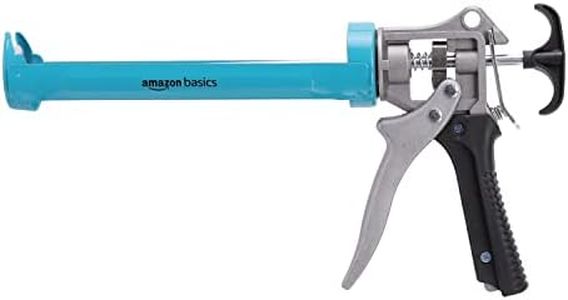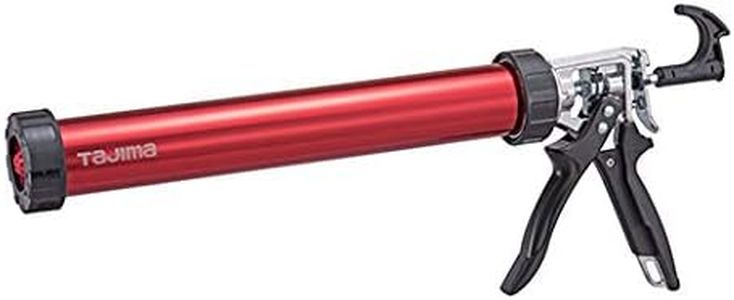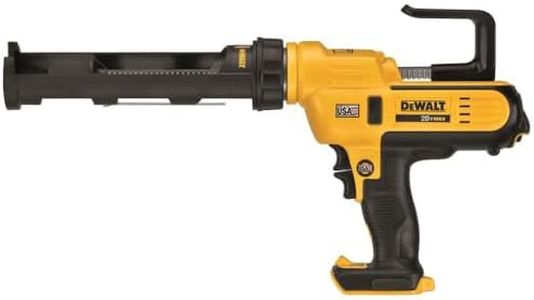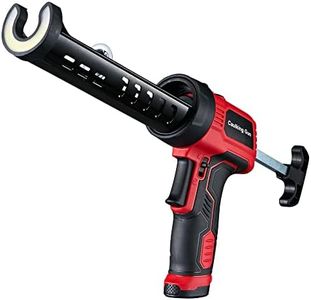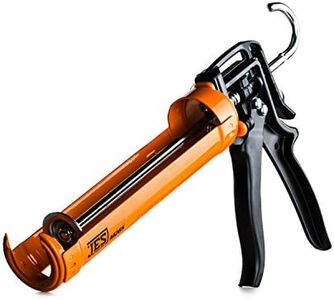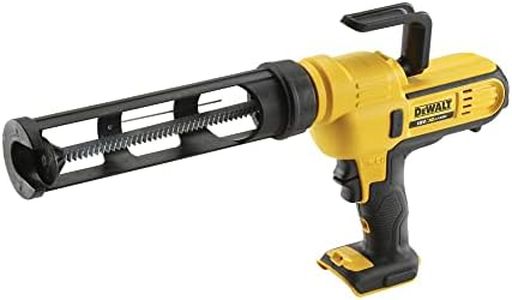We Use CookiesWe use cookies to enhance the security, performance,
functionality and for analytical and promotional activities. By continuing to browse this site you
are agreeing to our privacy policy
10 Best Caulk Guns
From leading brands and best sellers available on the web.Buying Guide for the Best Caulk Guns
Choosing the right caulk gun is essential for achieving smooth, consistent results when sealing, bonding, or filling gaps with caulk. A caulk gun’s purpose is to allow you to control the application of a material like silicone, acrylic, or adhesive from a tube, so your choice should match the kind of caulking you plan to do and how often you’ll be using the tool. Some guns are suited to light home repairs, while others are designed for more demanding or frequent jobs. Understanding the key features helps you select a caulk gun that feels comfortable, works smoothly, and fits your project needs.Thrust RatioThe thrust ratio is a measure of how much force the caulk gun applies to the tube with each squeeze of the trigger. It essentially tells you how powerful the gun is: a lower thrust ratio (like 5:1 or 8:1) is best for thin materials and small jobs, while a higher thrust ratio (like 10:1, 18:1, or above) can push out thicker materials with less effort. If you’re working with thin latex caulks or only doing occasional household sealing, a lower ratio may be fine. For thick adhesives, heavy-duty sealants, or cold weather use (when caulk gets stiffer), look for a higher thrust ratio. Choose the ratio based on the type of caulk and the amount of force you want to exert with your hand.
Type (Manual, Dripless, Electric, Pneumatic)Caulk guns come in several types: manual, dripless, electric (battery-powered), and pneumatic (air-powered). Manual caulk guns are hand-operated and suitable for most small jobs. Dripless models have a mechanism to stop the flow of caulk when you release the trigger, which helps reduce mess. Electric guns take the effort out of squeezing, making them good for frequent or large projects, while pneumatic guns require an air compressor and are mostly used by professionals for heavy-duty work. To choose, consider how often you’ll use the gun and how much control or convenience you need. For most home users, a manual or manual dripless caulk gun will be the best match.
Frame Type (Open, Half-Barrel, or Enclosed/Tubular)The frame is the part of the caulk gun that holds the tube of caulk. Open (skeleton) frames make it easier to load and remove tubes and are lighter in weight, while enclosed or tubular frames offer better support for the tube and can be more comfortable over long sessions. Half-barrel frames are a middle ground. If you expect to swap out tubes frequently or want a lighter gun, an open frame may be your choice. For long, continuous jobs where tube support matters, consider tubular models.
Trigger Comfort and GripTrigger comfort refers to how the handle and trigger feel in your hand while squeezing. More ergonomic designs with cushioned or shaped grips are less tiring and better suited for projects involving a lot of caulking. Simpler, all-metal handles might be fine for quick work, but for anyone with hand strength concerns or long tasks, a comfortable grip can make a big difference. Try the feel in hand, especially if you plan on tackling big jobs.
Size/CapacityMost caulk guns are made to fit standard 10-ounce cartridges, but some are designed for smaller or larger tubes. The capacity needs to match the tube size you usually buy. If you intend to use specialty or bulk caulking, check that the gun is compatible with those containers. For regular household use, a gun that fits 10-ounce tubes is usually just right.
Additional Features (Spout Cutter, Seal Punch, Ladder Hook)Some caulk guns have added features like a built-in spout cutter for opening caulk tubes, a seal punch to break the inner seal, or a ladder hook for hanging the gun while you work. These extras can make your project easier and are worth considering if you want maximum convenience. Think about which features would save you time or make your project less stressful.
